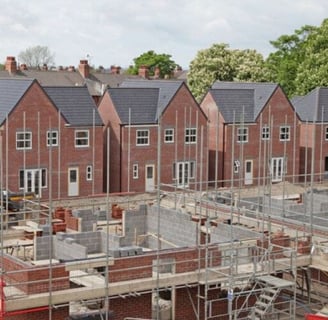Why Building Regulations and Structural Calculations Matter in UK Construction (2025 Guide)
5/19/20253 min read


Why Building Regulations and Structural Calculations Matter in UK Construction (2025 Guide)
Whether you're planning a loft conversion, a rear extension, or building an entirely new property, complying with Building Regulations and conducting structural calculations are essential steps in any UK construction project.
In this guide, we’ll break down why these two pillars are critical for safety, compliance, value, and long-term success. We’ll also explain who’s responsible, when they apply, and what happens if you ignore them.
What Are Building Regulations?
Building Regulations are a set of statutory requirements enforced by local authorities across the UK. They ensure that buildings are safe, healthy, accessible, energy-efficient, and structurally sound.
Unlike planning permission (which deals with how a building looks or where it sits), Building Regulations focus on how a structure is built and whether it is fit for use.
These regulations cover:
Structural integrity (Part A)
Fire safety (Part B)
Thermal performance (Part L)
Sound insulation (Part E)
Ventilation (Part F)
Electrical safety (Part P)
Sanitation and drainage (Part H)
Accessibility (Part M)
Every major project in the UK—from new builds and loft conversions to garage conversions and large-scale refurbishments—must be compliant with these rules.
What Are Structural Calculations?
Structural calculations are engineering assessments that determine whether a building (or part of it) can safely bear the loads and stresses it will face—such as weight from walls, people, furniture, and environmental factors like wind and snow.
They’re typically performed by a qualified structural engineer and are used to:
Specify sizes and materials for steel beams, joists, rafters, and foundations
Assess the impact of removing or altering load-bearing walls
Calculate the effects of loft conversions or roof modifications
Ensure the building meets Part A (Structure) of the Building Regulations
These calculations are essential for the building control application and for your builder to follow safe and approved specifications during the build.
Why Are They So Important in UK Construction?
Safety First
Without structural calculations and regulatory oversight, you risk building something that is unsafe—potentially leading to wall collapse, sagging floors, or even major structural failure. Regulations and engineering ensure your building is solid from the ground up.
Legal Compliance
It’s a legal requirement to follow building regulations in the UK. Failing to comply can lead to:
Enforcement notices
Fines
Difficulty selling the property
Forced demolition or costly remedial work
Approval and Certification
Once your project is inspected and signed off, you receive a Building Regulations Completion Certificate—a vital document when selling your property or applying for a mortgage.
Protecting Your Investment
Cutting corners may save short-term costs, but it creates long-term risk. A structurally sound, compliant building maintains its value—and protects your budget from hidden defects or future collapse.
Clear Instructions for Builders
Structural drawings and calculations give your builder precise instructions—from steel beam sizing to foundation depths. This avoids guesswork, ensures the build is correct the first time, and reduces delays.
Future-Proofing and Sustainability
UK building regulations are increasingly focused on energy performance and sustainability. Meeting them ensures your home is efficient, eco-friendly, and future-ready.
When Are Structural Calculations and Building Regs Needed?
You’ll need both in a wide range of projects, including:
Loft conversions
Rear, side, and wraparound extensions
Garage conversions
New builds
Removing or altering load-bearing walls
Installing large openings for bifold doors or roof lanterns
Major internal renovations or basement developments
💡 Tip: Even if your work falls under Permitted Development, it still must follow Building Regulations and include structural sign-off.
Who Handles These Responsibilities?
A structural engineer handles all structural design, calculations, and load assessments
An architect or designer can coordinate the drawings and design with structural input
Your builder works from those approved plans
Your local authority Building Control or private Approved Inspector signs off inspections at key stages
What Happens If You Skip Them?
Skipping Building Regulations approval or structural calculations is risky and can result in
A refusal to sign off or insure the property
Delays in selling your home—buyers may pull out if there’s no completion certificate
Collapse or failure of structural elements
Being forced to tear down or redo non-compliant work at your own expense
What Does the Process Look Like?
Hire a structural engineer to assess your plans and produce calculations/drawings
Submit a building control application (Full Plans or Building Notice route)
Commence work with approved builder, using engineer’s specs
Undergo site inspections at foundations, structural work, roofing, and completion stages
Receive final certificate once work meets all standards
Final Thoughts
Building regulations and structural calculations are not just red tape—they are the foundation of a safe, valuable, and future-proof home in the UK. In 2025, as regulations tighten and homeowners seek higher standards, compliance is more important than ever.
Whether you're adding a loft, knocking down walls, or building from scratch, make sure structural safety and regulatory approval are your top priorities. It’s the difference between a house that stands strong and one that could fall apart.